Home>Home Maintenance>When You Refinance: What Is The Procedure To Get Cashback For Home Repairs
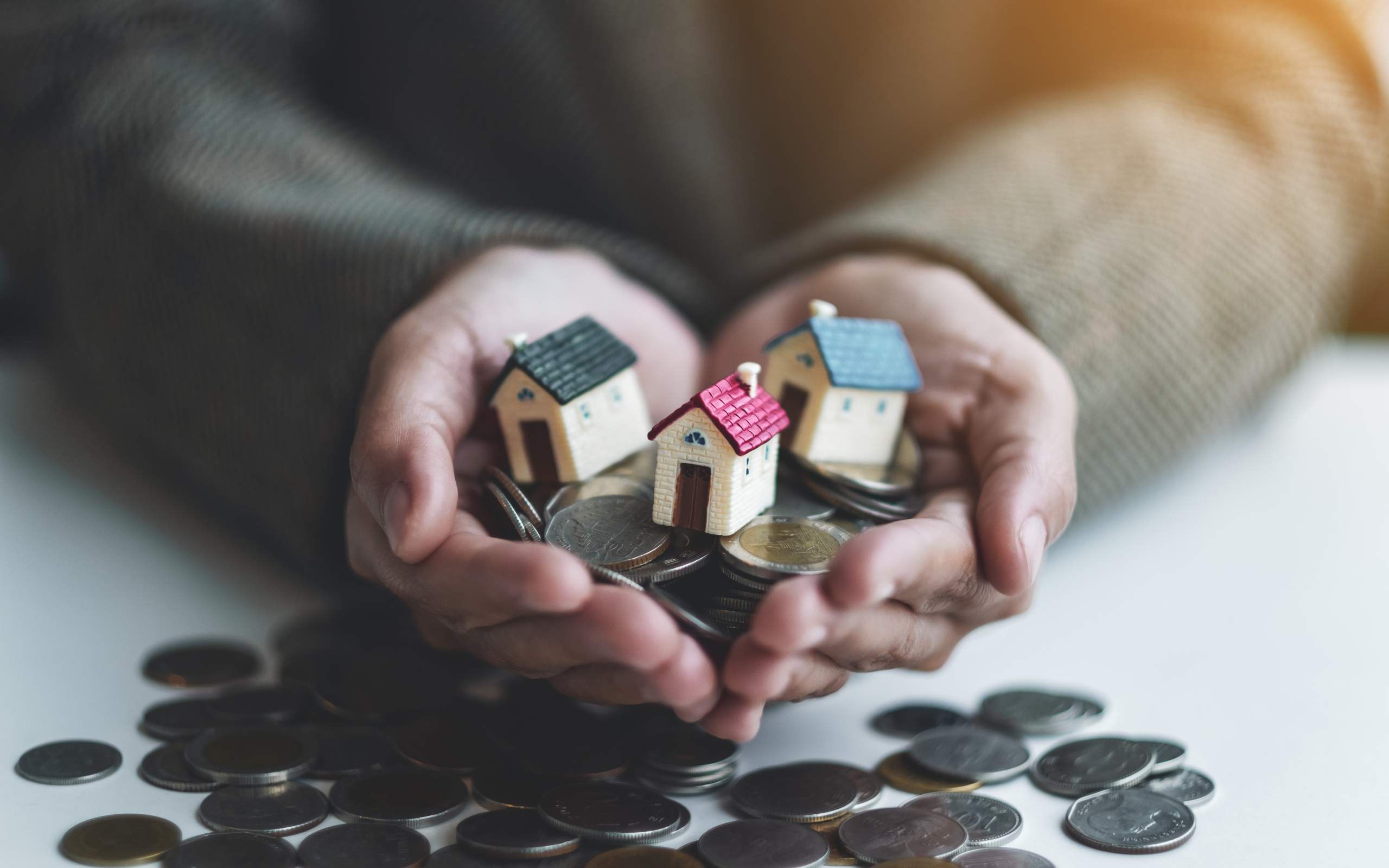

Home Maintenance
When You Refinance: What Is The Procedure To Get Cashback For Home Repairs
Modified: March 6, 2024
Looking to refinance your home? Discover the simple procedure to receive cashback for home repairs. Enhance the maintenance of your property with ease.
(Many of the links in this article redirect to a specific reviewed product. Your purchase of these products through affiliate links helps to generate commission for Storables.com, at no extra cost. Learn more)
Introduction
Purchasing a home is a significant milestone for many individuals and families. However, as time goes by, homeowners may find themselves needing to make repairs or renovations to maintain their property’s value and attract potential buyers, should they ever decide to sell. In such cases, finding the necessary funds for home repairs can be a challenge, especially if you don’t have a substantial amount of savings set aside.
Fortunately, refinancing your home loan can provide a solution to this predicament. When you refinance your mortgage, you have the opportunity to take advantage of cashback options that can help cover the cost of home repairs. In this article, we will explore the procedure to get cashback for home repairs during the refinancing process.
Key Takeaways:
- Refinancing your home loan can provide cashback for repairs, but it’s crucial to maintain good credit, plan repairs wisely, and evaluate repayment options to ensure long-term financial stability.
- Cashback for home repairs through refinancing offers financial flexibility, but careful budgeting, prioritizing repairs, and seeking professional advice are essential for successful utilization.
Read more: How To Refinance For Home Improvements?
Purpose of the article
The purpose of this article is to provide homeowners with a comprehensive understanding of how they can obtain cashback for home repairs through refinancing. By explaining the procedure and eligibility criteria, readers will gain valuable insights into the steps they need to take to access the funds they need for necessary home maintenance. Moreover, we will also discuss important tips and considerations to ensure a successful refinancing process and optimal use of the cashback funds.
Importance of cashback for home repairs
Maintaining and improving the condition of your home is crucial for both your comfort and its overall value. However, home repairs can often be expensive, and not everyone has the funds readily available to cover such costs. By utilizing cashback options during the refinancing process, homeowners can access the funds they need without relying on personal savings or taking out additional loans. This can alleviate financial stress and ensure that necessary repairs and improvements can be carried out in a timely manner, safeguarding the investment made in the property.
Furthermore, addressing any issues or making necessary improvements to your home can enhance its market value. Whether you plan to sell in the near future or not, keeping your property well-maintained is essential. It can attract potential buyers should you choose to sell down the line, and it can also help create a safe and comfortable living environment for you and your family.
Now that we understand the importance and benefits of accessing cashback for home repairs, let’s explore the procedure for obtaining these funds through refinancing.
Key Takeaways:
- Refinancing your home loan can provide cashback for repairs, but it’s crucial to maintain good credit, plan repairs wisely, and evaluate repayment options to ensure long-term financial stability.
- Cashback for home repairs through refinancing offers financial flexibility, but careful budgeting, prioritizing repairs, and seeking professional advice are essential for successful utilization.
Read more: How To Refinance For Home Improvements?
Purpose of the article
The purpose of this article is to guide homeowners in understanding the process of obtaining cashback for home repairs through refinancing. Home repairs are often an unavoidable expense, and having the necessary funds readily available can be a challenge for many homeowners. By refinancing their home loans and taking advantage of cashback options, homeowners can access the funds needed to address maintenance issues, make necessary improvements, or even embark on larger renovation projects.
This article aims to provide a comprehensive overview of how cashback for home repairs works during the refinancing process, from the basic definition and reasons for refinancing to the specific steps involved in obtaining the cashback funds. By understanding the process, eligibility criteria, and necessary documentation, homeowners can navigate through refinancing with confidence and ensure they make the most of the cashback options available.
Additionally, the article will cover essential tips and considerations to help homeowners make informed decisions regarding the usage of cashback funds. Proper planning and budgeting for home repairs will be discussed to ensure that the funds are used effectively and efficiently. Maintaining good credit during the refinancing process will also be emphasized, as this can have a significant impact on eligibility and interest rates. Lastly, evaluating repayment options for cashback loans will be explored to help homeowners choose the repayment plan that best fits their financial situation.
By providing this information, the article aims to empower homeowners with the knowledge they need to confidently pursue cashback for home repairs through refinancing. It will serve as a valuable resource for homeowners who are considering refinancing or who are in need of funds for home repairs. Whether you’re a first-time homeowner or have been living in your property for years, this article will provide you with the guidance and insights necessary to make informed decisions and successfully navigate the process of obtaining cashback for home repairs.
Importance of cashback for home repairs
Undertaking home repairs and renovations is an essential part of homeownership. However, the cost of these projects can often be a burden on a household budget. This is where cashback for home repairs through refinancing can play a crucial role. By refinancing your mortgage and accessing cashback funds, you can address necessary repairs or make desired improvements to your home without depleting your savings or taking on additional debt.
One of the key benefits of utilizing cashback for home repairs is that it allows homeowners to address maintenance issues promptly. Small problems can quickly turn into more significant and costly issues if left unattended. By having the necessary funds available, you can tackle repairs immediately, preventing further damage, and potentially saving money in the long run. This can protect the structural integrity of your home and maintain its value.
Furthermore, cashback for home repairs can also enable homeowners to make desired improvements. Whether it’s updating a dated kitchen, adding another bathroom, or making your home more energy-efficient, these improvements can enhance your quality of life and increase the value of your property. With cashback funds, you can invest in these upgrades without straining your finances or delaying the transformation of your home.
Another advantage of obtaining cashback for home repairs through refinancing is the potential for tax benefits. Depending on your local tax laws, you may be eligible for tax deductions or credits for home improvement expenses. This can help offset the costs and provide additional financial relief.
Moreover, accessing cashback for home repairs can be a smarter financial move compared to other borrowing options. Traditional personal loans or credit cards often come with higher interest rates and shorter repayment terms. With cashback obtained through refinancing, you can potentially secure more favorable interest rates while enjoying more extended repayment periods, making it a more affordable solution for funding your home repairs.
Overall, cashback for home repairs through refinancing can offer homeowners financial flexibility, peace of mind, and the ability to maintain and enhance their homes. By taking advantage of this option, you can ensure that your property remains in good condition, improve its value, and create a comfortable living space for you and your family.
Having understood the importance of cashback for home repairs, let’s dive into the concept of refinancing and how it can enable homeowners to access these funds.
Read more: Rustic Luxe: Refined Country Living
Understanding Refinancing
When it comes to homeownership, refinancing is a financial strategy that allows you to replace your existing mortgage with a new one. Essentially, you are taking out a new loan to pay off your current mortgage and, in the process, make certain adjustments to your loan terms, interest rate, and potentially access additional funds as cashback.
Refinancing offers several potential benefits to homeowners. One of the primary reasons individuals choose to refinance is to obtain a lower interest rate, which can result in significant savings over the life of the loan. By securing a lower rate, you can reduce the overall cost of your mortgage, freeing up funds that can be utilized for other purposes, such as home repairs or renovations.
In addition to interest rate reduction, refinancing also provides an opportunity to change your loan term. For example, if you initially had a 30-year mortgage and have been making regular payments for several years, you may consider refinancing to a 15-year mortgage. This allows you to pay off your loan sooner and potentially save on interest payments in the long run. Conversely, if you’re struggling with high monthly payments, you might choose to refinance to a longer-term loan to reduce your monthly financial obligations.
Another important aspect of refinancing is the ability to switch from an adjustable-rate mortgage (ARM) to a fixed-rate mortgage or vice versa. With an ARM, your interest rate fluctuates periodically, while a fixed-rate mortgage offers stability with a consistent interest rate that remains the same over the life of the loan. Refinancing allows you to choose the type of loan that aligns with your financial goals and risk tolerance.
Now that we have a clear understanding of what refinancing entails, let’s delve into how homeowners can leverage this process to obtain cashback for home repairs.
Reasons to Refinance a Home Loan
Refinancing a home loan offers homeowners various potential benefits and opportunities. Here are some common reasons why individuals choose to refinance:
1. Interest rate reduction: One of the primary motivations for refinancing is to obtain a lower interest rate on the new loan. When interest rates drop significantly below the rate of your current mortgage, refinancing can allow you to take advantage of these lower rates and reduce your monthly mortgage payments. This can result in substantial savings over time.
2. Change in loan term: Refinancing provides an opportunity to adjust the length of your loan term. For example, if your goal is to pay off your mortgage sooner, you may choose to refinance from a 30-year to a 15-year loan. Conversely, if you’re seeking to reduce your monthly payment, refinancing to a longer-term loan can help achieve that.
3. Accessing home equity: Homeowners who have built up equity in their property may choose to refinance to access the available funds. This can be done through a cash-out refinance, where the new mortgage amount is higher than the remaining balance, and the excess funds can be used for various purposes, such as home repairs, debt consolidation, education expenses, or investment opportunities.
4. Debt consolidation: Refinancing can also be used as a debt consolidation strategy. By refinancing, you can combine high-interest debts, such as credit card balances or personal loans, into a single mortgage with a lower interest rate. This consolidation can simplify your monthly payments and potentially save you money on interest charges.
5. Change in financial situation: Life circumstances can change, and homeowners may find themselves in need of a more adaptable mortgage. For example, if your income has increased significantly since you first obtained your mortgage, refinancing to a larger loan can allow you to access additional funds for various purposes, including home repairs or renovations.
Now that we have explored the reasons why homeowners choose to refinance, let’s dive into how cashback for home repairs works during the refinancing process. This option can be particularly beneficial for homeowners looking to fund necessary repairs or improvements without significant out-of-pocket expenses.
Cashback for Home Repairs: How It Works
When refinancing your home loan, lenders often offer cashback options as an incentive to attract borrowers. Cashback for home repairs allows homeowners to access a portion of the refinanced loan amount upfront, which can then be used to fund necessary home repairs, renovations, or improvements.
The amount of cashback available is typically based on a percentage of the new loan amount. Lenders may have different policies and limits when it comes to cashback, so it’s essential to research and compare offers from different lenders to find the best option for your needs.
To qualify for cashback, homeowners will need to meet certain eligibility criteria set by the lender. These criteria may include a minimum credit score, a specific loan-to-value ratio, and a satisfactory assessment of the property’s condition. Additionally, the lender may require proof of the intended use of the cashback funds, such as estimates or invoices from contractors or suppliers.
It’s crucial to note that cashback for home repairs is not a grant or a gift; it is a part of the refinanced loan and will need to be repaid over time. The cashback amount is added to the total mortgage balance, and homeowners will make monthly payments that include the principal, interest, and the cashback amount borrowed.
When considering cashback for home repairs, it is essential to have a clear plan and budget in place for the repairs or improvements you intend to undertake. Proper planning will help ensure that the funds are allocated efficiently, maximizing the value and benefits derived from the cashback.
In the next section, we will discuss the step-by-step procedure to obtain cashback for home repairs during the refinancing process.
Overview of Cashback Options During Refinancing
When refinancing your home loan, cashback options can provide a valuable opportunity to access funds for home repairs or renovations. Here is an overview of the cashback options available during the refinancing process:
1. Cash-out refinance: A cash-out refinance allows homeowners to borrow against the equity they have built up in their property. In this option, the new mortgage amount is higher than the remaining balance, and the difference is received as cashback. Homeowners can then use this cash to fund home repairs or other expenses.
2. Closing cost credits: Some lenders may offer cashback in the form of closing cost credits. Closing costs typically include fees for appraisals, inspections, and other expenses involved in the refinancing process. The lender can provide a credit to offset or cover these costs, allowing homeowners to free up cash for home repairs.
3. Loan modification with cashback: In certain circumstances, homeowners may be eligible for cashback through a loan modification rather than a complete refinancing. Loan modifications involve making changes to the existing mortgage terms, such as reducing the interest rate or extending the loan term, and potentially accessing cashback funds as part of the modification.
4. Cashback incentives: Lenders may also offer direct cashback incentives to entice borrowers to refinance with their institution. These incentives can be a set dollar amount or a percentage of the loan amount and provide additional funds that can be utilized for home repairs.
It’s important to note that the availability of cashback options may vary depending on the lender and the specific terms of the refinancing agreement. Different lenders may have different cashback programs with varying eligibility criteria and maximum cashback amounts. Therefore, it’s crucial to research and compare offers from multiple lenders to find the option that best suits your needs.
When considering cashback options during refinancing, it’s also vital to evaluate the overall cost and impact on your mortgage. While obtaining cashback can provide immediate funds for home repairs, it can also increase your mortgage balance and potentially result in higher monthly mortgage payments or longer loan terms. It’s crucial to weigh the benefits against the long-term financial implications and ensure that the cashback option aligns with your financial goals.
In the next section, we will discuss the eligibility criteria for cashback and how lenders determine the amount of cashback available to homeowners during the refinancing process.
Read more: What Happens When Insulation Gets Wet
Eligibility Criteria for Cashback
To access cashback funds during the refinancing process, homeowners will need to meet specific eligibility criteria set by lenders. While these criteria may vary from lender to lender, here are some common factors that lenders consider when determining an individual’s eligibility for cashback:
1. Loan-to-value ratio (LTV): Lenders typically assess the loan-to-value ratio, which is the ratio of the loan amount to the appraised value of the property. A lower LTV ratio indicates that the homeowner has more equity in the property, making them a more favorable candidate for cashback. Generally, lenders prefer borrowers with a lower LTV to mitigate the risk associated with providing cashback funds.
2. Credit score and history: Lenders focus on the creditworthiness of borrowers to assess their ability to repay the refinanced loan with cashback. A good credit score demonstrates responsible financial behavior and increases the likelihood of eligibility for cashback. Lenders typically have minimum credit score requirements, and borrowers with higher credit scores may be more likely to qualify for cashback and secure better interest rates.
3. Income and employment stability: Lenders consider the borrower’s income and job stability to determine their ability to repay the refinanced loan, including the cashback funds. Proof of a stable income source, such as employment or self-employment income, can positively impact eligibility for cashback.
4. Property condition: The condition of the property may also be a factor in determining eligibility for cashback. Lenders may require a property appraisal to assess its value and ensure that any necessary repairs or maintenance do not significantly impact the property’s worth. Some lenders may have specific requirements regarding the condition or type of property eligible for cashback.
5. Debt-to-income ratio (DTI): Lenders analyze the borrower’s debt-to-income ratio, which compares their monthly debt payments to their monthly income. A lower DTI ratio indicates a more favorable financial position, as it demonstrates the borrower’s ability to manage their debts effectively. Some lenders may have specific DTI limits for cashback eligibility.
It’s important to note that meeting the eligibility criteria does not guarantee approval for cashback. Lenders take a holistic approach when assessing borrowers and their overall financial profile. Each lender may have their specific requirements and criteria, so it’s crucial to consult with different lenders to understand their eligibility guidelines and find the best fit for your situation.
In the next section, we will explore how lenders determine the amount of cashback available to homeowners during refinancing, helping you understand how your potential cashback funds will be determined.
Determining the Amount of Cashback
The amount of cashback available to homeowners during the refinancing process is typically determined by the lender. While specific calculations may vary, here are some factors that lenders consider when determining the amount of cashback:
1. Loan-to-value ratio (LTV): The loan-to-value ratio plays a significant role in determining the amount of cashback available. Lenders calculate the LTV by dividing the loan amount by the appraised value of the property. The higher the LTV, the lower the potential cashback amount. Lenders usually have a maximum LTV limit to manage risk, so borrowers with a lower LTV can typically access a larger cashback amount.
2. Loan amount and equity: The cashback amount is often a percentage of the refinanced loan amount. This percentage can vary depending on the lender and the specific cashback program. Generally, borrowers with a larger loan amount and more equity in their property may be eligible for a higher cashback amount.
3. Eligibility criteria: Meeting the lender’s eligibility criteria can impact the cashback amount available. Factors such as credit score, income, and property condition may influence the lender’s assessment of the borrower’s risk profile. Borrowers who meet the lender’s desired criteria may have access to a larger cashback amount.
It’s important to note that the total cashback amount is added to the refinanced loan balance and typically cannot exceed the maximum permissible loan amount based on the lender’s guidelines. Borrowers should carefully consider their financial needs and the impact of a larger loan balance on their monthly mortgage payments and overall financial situation.
When refinancing for cashback for home repairs, make sure to have a clear plan for the repairs and provide documentation to the lender. Be prepared for a home appraisal to determine the value of the repairs.
The Procedure to Get Cashback for Home Repairs
Now that we have discussed the overview of cashback options during refinancing and how lenders determine the cashback amount, let’s move on to the procedure for obtaining cashback for home repairs. Here are the steps involved:
1. Research and select a reputable lender: Begin by researching different lenders who offer cashback options during the refinancing process. Compare their terms, interest rates, and eligibility criteria to find the best fit for your needs. It’s crucial to work with a reputable lender who can provide competitive rates and reliable service.
2. Begin the loan application process: Once you have chosen a lender, start the loan application process. This typically involves submitting documentation such as proof of income, employment history, and credit information. The lender will evaluate your financial profile to determine your eligibility for refinancing and cashback.
3. Consult with the lender about cashback options and requirements: During the application process, discuss your intention to obtain cashback for home repairs with the lender. They will provide information on the specific cashback options available, including the eligibility criteria and documentation required.
4. Provide necessary documentation and complete the loan application: Work closely with your lender to provide any additional documentation or information requested. This may include estimates or invoices for the home repair projects you intend to undertake. Complete the loan application accurately and promptly to facilitate the process.
5. Wait for loan approval and finalization: Once your application is submitted, the lender will review and assess your financial information. They will evaluate your eligibility for refinancing and the requested cashback amount. You will need to wait for their approval before proceeding.
6. Receive cashback funds and start planning home repairs: If your loan is approved, the lender will disburse the cashback funds to you. These funds can then be used to cover the costs of your planned home repairs or renovations. Work with contractors, suppliers, and professionals to ensure that your repair project stays within budget and proceeds smoothly.
It’s important to note that the specific procedure may vary slightly depending on the lender and your individual circumstances. It’s advisable to maintain open communication with your lender throughout the process and seek clarification on any questions or concerns you may have.
In the next section, we will provide important tips and considerations for using cashback funds effectively for home repairs.
Step 1: Research and Select a Reputable Lender
When it comes to obtaining cashback for home repairs through refinancing, the first step is to conduct thorough research and select a reputable lender. The lender you choose will play a crucial role in the overall refinancing process, so it’s important to make an informed decision. Here’s a breakdown of what to consider during this step:
1. Research multiple lenders: Start by researching and identifying several lenders who offer cashback options during the refinancing process. Look for reputable financial institutions or mortgage lenders with a track record of providing quality service and competitive rates. Consider both traditional brick-and-mortar lenders and online lenders, as they may offer different benefits and terms.
2. Compare terms and conditions: Once you have a list of potential lenders, compare their terms and conditions. Pay attention to key factors such as interest rates, closing costs, loan terms, eligibility criteria, and cashback options. Analyze the fine print to understand any potential fees or limitations associated with the cashback program. This comparison will help you determine which lender offers the most favorable terms for your needs.
3. Consider reputation and customer reviews: Take the time to research the reputation of each lender on your list. Look for customer reviews and testimonials from previous borrowers to gain insight into their experiences with the lender. A lender with positive feedback, strong customer service, and a history of honest business practices is generally a good indicator of reliability and trustworthiness.
4. Seek recommendations and referrals: Reach out to friends, family, or colleagues who have recently refinanced their homes. Ask for recommendations and referrals based on their experiences. Hearing firsthand accounts can provide valuable insights and help you narrow down your options to lenders with a proven track record.
5. Don’t forget about local options: While researching online lenders and national institutions is essential, don’t overlook the potential benefits of working with local lenders or credit unions. Local lenders may offer personalized service, local market knowledge, and specialized cashback programs that cater to your specific needs. They can provide a more localized experience and potentially faster response times.
6. Make contact and ask questions: Once you have narrowed down your list to a few potential lenders, take the time to make contact and ask questions. Reach out to their customer service through phone calls, emails, or live chat to inquire about their refinancing options and cashback programs. Ask about their eligibility requirements, application process, and the documentation you will need to provide.
By thoroughly researching and selecting a reputable lender, you set a solid foundation for a successful refinancing experience. It ensures that you work with a trusted entity that offers competitive rates, favorable terms, and reliable customer service. Taking the time to choose the right lender will increase your chances of obtaining cashback funds and achieving your goals of funding home repairs.
Step 2: Begin the Loan Application Process
After researching and selecting a reputable lender for obtaining cashback for home repairs through refinancing, the next step is to begin the loan application process. This step involves gathering the necessary documentation and submitting your application to the lender. Here’s what you need to know about starting the loan application process:
1. Review the lender’s requirements: Each lender has specific requirements for the loan application process. Review the lender’s website or contact their customer service to obtain a clear understanding of the documentation and information they require. This may include proof of income, employment history, credit information, and property-related documents.
2. Gather necessary documents: Collect all the required documentation to complete your loan application. This typically includes recent pay stubs, W-2 forms, tax returns, bank statements, and identification documents such as a driver’s license or passport. In addition, you may need documents related to your property, such as the deed, current mortgage statement, and homeowners insurance information.
3. Double-check the accuracy of your documents: Before submitting your application, double-check the accuracy of all the documents you have gathered. Ensure that your personal and financial information is correct and up-to-date. Mistakes or inaccuracies may delay the loan application process or result in requests for additional documentation.
4. Complete the loan application form: Once you have gathered the necessary documents, complete the lender’s loan application form. This form collects essential information about your financial background, employment history, and the property in question. Fill out the form accurately and provide all required details.
5. Submit your loan application: After completing the loan application form, submit it to the lender for review. Some lenders offer the option to apply online, while others may require you to visit a physical branch or mail in the application. Follow the lender’s instructions for submission carefully, ensuring that you provide all necessary documents along with the application.
6. Keep copies of all documents: Make copies of all the documents you submitted, including the loan application form. This will help you maintain a record of your application and serve as a reference if any questions or concerns arise during the process.
7. Stay in communication with your lender: Once you have submitted your loan application, maintain open lines of communication with your lender. Promptly respond to any requests for additional information or clarification. Stay informed about the progress of your application and seek updates when needed.
By following these steps, you can initiate the loan application process with your chosen lender. By providing accurate and complete information, you set a positive tone for the rest of the refinancing journey. Being proactive and responsive throughout the application process helps maintain a smooth and efficient experience as you move closer to obtaining cashback for your home repairs.
Step 3: Consult with the Lender About Cashback Options and Requirements
After beginning the loan application process for obtaining cashback for home repairs through refinancing, the next step is to consult with your chosen lender regarding the specific cashback options and requirements. This step is crucial to understanding the eligibility criteria, terms, and conditions associated with cashback. Here’s how to navigate this step effectively:
1. Schedule a consultation: Reach out to your lender and request a consultation to discuss the cashback options available to you. This can typically be done through a phone call, video conference, or an in-person appointment, depending on the lender’s preferences and your convenience.
2. Prepare a list of questions: Before the consultation, prepare a list of questions to ensure you cover all the important aspects of the cashback options. Ask about the cashback program’s terms, including the maximum amount available, the repayment terms, and any restrictions or limitations associated with the use of the funds.
3. Discuss eligibility requirements: During the consultation, inquire about the specific eligibility requirements for accessing cashback. This may include credit score thresholds, loan-to-value ratios, and other criteria that must be met to qualify. Understand what the lender looks for in determining your eligibility and ask for clarification on any requirements that may be unclear to you.
4. Provide details about your home repairs: Share specific details about the home repairs or renovations you intend to undertake. This will help the lender assess the viability of your project and provide guidance on the approval process. Provide estimates or invoices from contractors or suppliers to support your plans.
5. Understand the impact on your loan: Ask about how the cashback will affect the terms of your refinanced loan. Inquire about the interest rates, repayment schedules, and any additional fees associated with the cashback funds. A clear understanding of these terms will enable you to make informed decisions and avoid any surprises down the line.
6. Clarify any concerns or doubts: If you have any concerns or doubts about the cashback options or requirements, don’t hesitate to express them during the consultation. Your lender should be able to address your concerns and provide guidance to ensure you have a thorough understanding of the process.
7. Take notes and ask for documentation: Throughout the consultation, take notes on the key points discussed. Additionally, ask your lender for any documentation outlining the cashback options, requirements, and terms. Having this information in writing will help you refer back to it later and make well-informed decisions.
By consulting with your lender about cashback options and requirements, you gain valuable insights into the specific conditions associated with accessing cashback for your home repairs. This step ensures that you have a clear understanding of the eligibility criteria, repayment terms, and any restrictions involved. Armed with this knowledge, you can proceed confidently with the loan application process and make informed decisions about funding your home repairs through cashback.
Step 4: Provide Necessary Documentation and Complete the Loan Application
As you continue with the loan application process for obtaining cashback for home repairs through refinancing, the next step is to provide the necessary documentation and complete the loan application. This step requires careful organization and attention to detail. Here’s how to successfully navigate this stage:
1. Gather required documentation: Refer to the lender’s requirements and gather all the necessary documentation. Common documents include proof of income, bank statements, tax returns, employment verification, property information, and identification documents. Ensure you have copies of all the requested documents.
2. Review the lender’s checklist: Carefully review any checklist provided by the lender. This checklist will outline the specific documents required for the loan application. Cross-reference the checklist with the gathered documentation to ensure you have everything in order.
3. Organize and prepare the documents: Organize your documents in a neat and logical manner. Create separate folders or sections for each category of documents, such as income, property, and identification. Label each document clearly and make sure they are easily accessible when needed.
4. Complete the loan application: Fill out the loan application form accurately and completely. Provide all requested information, including personal details, financial information, and the purpose of the cashback funds. Double-check the form for any errors or omissions before submitting it.
5. Provide additional requested information: During the application process, the lender may request additional information or documentation. It’s important to promptly provide these documents to avoid any delays. Be responsive and attentive to any requests, as they are essential for moving the process forward.
6. Seek guidance when needed: If you have any questions or concerns about the required documentation or the loan application itself, don’t hesitate to seek guidance from your lender. They are there to assist you throughout the process and can clarify any confusion you may have.
7. Keep copies of all submitted documents: Make copies of all the documents you provide to the lender, both for your records and in case any issues arise during the process. Having copies of your documentation ensures that you have a backup and can easily refer to them if needed.
Remember that accuracy and completeness are crucial when submitting documentation and completing the loan application. Mistakes or missing information can lead to delays in the approval process. By carefully organizing and providing all the required documents, you demonstrate your readiness and commitment to move forward with the refinancing and cashback process.
In the next step, we will explore what to expect during the waiting period for loan approval and finalization.
Step 5: Wait for Loan Approval and Finalization
Once you have provided the necessary documentation and completed the loan application for obtaining cashback for home repairs through refinancing, the next step is to wait for loan approval and finalization. This step requires patience and understanding of the timeline involved. Here’s what you need to know about this waiting period:
1. Be prepared for a processing timeline: Loan approval and finalization can take time, and the exact timeline can vary depending on various factors, including the lender’s workload, the complexity of your application, and any potential delays in document verification. While some lenders may provide estimated time frames, it’s important to remember that these are approximate and subject to change.
2. Maintain open communication with your lender: Throughout the waiting period, it’s crucial to maintain open communication with your lender. Respond promptly to any requests for additional information and provide any documentation or clarification they may need. Prompt and clear communication helps facilitate the loan approval process and ensures a smooth experience.
3. Exercise patience and avoid unnecessary stress: Waiting for loan approval and finalization can be a stressful time, but it’s important to remain patient and avoid unnecessary stress. Understand that the lender needs time to review the application, verify the provided documentation, and assess your eligibility for cashback. Focus on completing other tasks or projects to keep your mind occupied during this waiting period.
4. Seek updates when necessary: If you have been waiting for an extended period without any updates from the lender, don’t hesitate to seek updates. Reach out to your lender and politely inquire about the status of your loan application. They should be able to provide you with information about the progress and any potential hurdles they may be currently addressing.
5. Take advantage of the waiting period: While waiting for loan approval and finalization, use the time to your advantage. Start planning your home repairs in more detail, obtain quotes from contractors, and make any necessary arrangements. This will help you be prepared and ready to proceed once you receive the cashback funds.
6. Be prepared for additional requests or conditions: During the review process, the lender may request additional documentation or clarification. Be prepared to provide these materials promptly. Understand that this is a standard part of the loan approval process and is aimed at ensuring accuracy and compliance with lending regulations.
Remember that loan approval and finalization involve careful assessment and scrutiny by the lender. By maintaining patience, communication, and proactive engagement, you demonstrate your commitment and readiness to proceed. While the waiting period can be challenging, it is a necessary step toward accessing cashback funds for your home repairs.
Once the loan approval and finalization process is complete, you will move forward to the next and final step: receiving the cashback funds and beginning the process of planning and executing your home repairs.
Step 6: Receive Cashback Funds and Start Planning Home Repairs
After the loan approval and finalization process for obtaining cashback for home repairs through refinancing, the exciting moment arrives when you receive the cashback funds. This step marks the transition from the loan application phase to putting those funds to use for your home repairs. Here’s what you need to know to make the most of this step:
1. Confirm the receipt of funds: Once the lender disburses the cashback funds, carefully review your financial statements to confirm that the funds have been deposited into your designated account. If there are any discrepancies or concerns, promptly contact your lender to address the issue.
2. Create a plan for home repairs: With the cashback funds in hand, start planning your home repairs. Prioritize the repairs or renovations based on urgency or importance. Assess the scope of the repairs, create a timeline, and consider consulting contractors and professionals to help you with cost estimates and project management.
3. Obtain multiple quotes: When planning your home repairs, obtain multiple quotes from reputable contractors. This will help ensure that you get competitive pricing and make an informed decision. Compare the costs, expertise, and timelines provided by different contractors to select the option that best suits your needs.
4. Budget effectively: Before proceeding with the repairs, create a detailed budget that outlines all anticipated expenses. Include not only the contractor costs but also additional expenses such as permits, materials, and any miscellaneous fees. It’s crucial to ensure that the cashback funds cover the entire cost of the repairs while keeping a contingency fund for any unexpected costs that may arise.
5. Stick to your budget: Once you have established a budget, make a concerted effort to stick to it. Prioritize your expenses, avoid unnecessary additions or changes, and track your spending carefully. This will help you utilize the cashback funds efficiently and effectively for the intended purpose of home repairs.
6. Communicate with contractors and suppliers: Maintain open communication with contractors and suppliers throughout the repair process. Clearly communicate your expectations, discuss timelines, and regularly review the progress of the repairs. This will help ensure a smooth and successful execution of the repair projects.
7. Keep records and receipts: As the home repairs progress, maintain detailed records of all transactions, invoices, and receipts related to the repairs. This documentation will be useful for future reference, potential insurance claims, or if any questions arise concerning the repairs.
8. Quality over quantity: When selecting materials or deciding on the scope of repairs, prioritize quality over quantity. Investing in durable and long-lasting materials and executing repairs with high craftsmanship will save you from costlier repairs in the future.
9. Consider energy-efficient upgrades: If possible, explore energy-efficient upgrades during the repair process. This can include installing energy-efficient appliances, improving insulation, or upgrading to energy-saving fixtures. These upgrades can potentially save you money on utility bills over time and enhance the overall value of your home.
10. Enjoy your improved home: Once the repairs are complete, take the time to appreciate and enjoy your improved home. Whether it’s the satisfaction of resolved maintenance issues or the excitement of a newly renovated space, relish in the comfort and aesthetics that the repairs have brought to your home.
By following these tips and considerations, you can effectively utilize the cashback funds obtained through refinancing for home repairs. Careful planning, budgeting, and oversight will help ensure that the funds are used wisely and that your home improvement projects are executed successfully. Now, you can bask in the newfound comfort and enhanced value of your updated dwelling.
Proper Planning and Budgeting for Home Repairs
Proper planning and budgeting are crucial steps in ensuring the success of your home repair projects. Effective planning enables you to prioritize repairs, allocate resources appropriately, and avoid any financial surprises along the way. Here are some key considerations to keep in mind when planning and budgeting for home repairs:
1. Assess the scope of repairs: Start by assessing the scope of repairs needed in your home. Take a thorough look at each area and identify any maintenance issues or necessary improvements. Categorize the repairs based on urgency and importance to determine where to allocate your resources.
2. Create a detailed checklist: Develop a detailed checklist that outlines each repair or improvement required. Be specific about the tasks involved and the materials needed. This will help you stay organized, keep track of progress, and ensure you don’t overlook any vital repairs.
3. Obtain multiple quotes: When budgeting for home repairs, obtain multiple quotes from reputable contractors. This will give you a better understanding of the estimated costs associated with each repair or improvement. Comparing quotes will help you make informed decisions and choose the most cost-effective option.
4. Prioritize repairs: Once you have assessed the scope of repairs and obtained quotes, prioritize the repairs based on urgency and necessity. Focus on addressing critical issues first, such as safety concerns or structural problems. By prioritizing repairs, you can allocate your budget accordingly and ensure that essential repairs are taken care of before tackling less critical projects.
5. Set a realistic budget: Establish a realistic budget for your home repair projects. Consider the estimated costs from the quotes you received and determine how much you can comfortably allocate to each repair. Be mindful of unexpected expenses and include a contingency fund to account for any unforeseen costs that may arise during the repair process.
6. Seek cost-saving alternatives: To stay within your budget, explore cost-saving alternatives without compromising on quality. For example, consider using slightly less expensive materials or opting for energy-efficient options that can save you money in the long run. Be sure to weigh the potential long-term benefits against the upfront costs when making such decisions.
7. Research financing options: If your repair budget exceeds your available funds, research financing options to determine the best approach. Explore options like personal loans, home equity loans, or lines of credit to help bridge the gap between your budget and total repair costs. Remember to weigh the interest rates and repayment terms to ensure it aligns with your financial capabilities.
8. Plan for unexpected expenses: Even with meticulous planning and budgeting, it’s essential to be prepared for unexpected expenses. During the repair process, unforeseen issues or complications may arise, requiring additional financial resources. Having a contingency fund in your budget helps cushion any unexpected costs and ensures your project can move forward seamlessly.
9. DIY vs. hiring professionals: Assess your own skills and capabilities in completing certain repair tasks. While DIY projects may save money, be honest about your abilities and only take on projects that you are confident you can handle effectively. For complex repairs or those requiring specialized knowledge, it’s often best to hire professionals to ensure the work is done correctly and to avoid potential costly mistakes.
10. Review and track expenses: Throughout the repair process, track your expenses carefully. Keep records of all receipts, invoices, and any other financial documentation related to your home repairs. Regularly review your budget and compare it with the actual expenses incurred to ensure you are staying within your planned budget.
By following these steps for proper planning and budgeting, you can effectively allocate resources, monitor expenses, and ensure the success of your home repair projects. Taking the time to plan and budget in advance will help you stay organized, make informed decisions, and achieve the desired results while keeping your financial goals in check.
Importance of Maintaining Good Credit During the Refinancing Process
Maintaining good credit is crucial during the refinancing process, as it has a significant impact on your eligibility for favorable terms, interest rates, and overall loan approval. Here’s why it’s important to prioritize your credit during the refinancing process:
1. Eligibility for better interest rates: Lenders consider credit history and credit scores when determining the interest rates they offer. A higher credit score indicates a lower credit risk, making you eligible for more competitive interest rates. By maintaining good credit, you increase your chances of securing a lower interest rate, resulting in long-term savings on your mortgage payments.
2. Access to more financing options: A strong credit profile expands your options when it comes to financing. Lenders are more likely to offer flexible loan terms, preferential cashback options, and additional perks to borrowers with good credit. This provides greater flexibility in customizing your loan to best suit your needs and financial goals.
3. Improved loan approval chances: When refinancing, your creditworthiness is assessed by lenders to determine your ability to repay the loan. A good credit history demonstrates responsible financial behavior, making it more likely for lenders to approve your refinancing application. Conversely, a poor credit history can result in loan denial or less favorable terms and conditions.
4. Lower borrowing costs: Maintaining good credit contributes to lower borrowing costs in various ways. In addition to better interest rates, good credit may enable you to avoid additional fees and charges, such as higher origination fees or elevated closing costs. Over the life of your refinanced loan, these savings can add up significantly.
5. Ability to qualify for cashback options: Cashback for home repairs is a common incentive offered during refinancing. However, many cashback programs require borrowers to meet certain creditworthiness criteria. By maintaining good credit, you increase your chances of qualifying for these cashback options, giving you access to funds to cover necessary repairs or improvements.
6. Enhanced financial stability and future opportunities: Healthy credit habits not only benefit the refinancing process but also contribute to your overall financial stability. When you maintain good credit, you have a solid foundation for future borrowing needs and financial opportunities. It opens doors to additional credit options, such as future loans or lines of credit, should you need them down the line.
7. Long-term financial planning and security: Building and maintaining good credit is an essential aspect of long-term financial planning. By staying responsible with your credit, you establish a solid financial reputation and increase your likelihood of achieving financial goals, such as buying additional properties, starting a business, or securing favorable insurance rates.
Maintaining good credit during the refinancing process requires consistent financial discipline and responsible credit management. To maintain good credit:
– Pay your bills on time, including mortgage payments, credit card bills, and other financial obligations.
– Keep credit card balances low and aim to pay them off in full each month.
– Avoid unnecessary credit inquiries or opening new lines of credit unless necessary.
– Regularly review your credit report for accuracy and address any errors promptly.
– Limit credit utilization to a reasonable percentage of your available credit.
– Work on building a diverse credit mix over time, including different types of credit accounts.
By prioritizing good credit, you position yourself for more favorable refinancing terms, increased financial opportunities, and long-term stability. It’s a valuable investment in your overall financial well-being and can significantly impact your financial future.
Evaluating Repayment Options for Cashback Loans
Once you have obtained cashback funds through refinancing for your home repairs, it’s crucial to evaluate the repayment options available to you. Repaying the cashback loans responsibly ensures that you maintain financial stability and maximize the benefits derived from the funds. Here are some factors to consider when evaluating repayment options:
1. Loan term: Consider the loan term available for repaying the cashback funds. Longer loan terms offer lower monthly payments, but result in higher overall interest payments. On the other hand, shorter loan terms may have higher monthly payments but can help save on interest costs. Evaluate your financial situation and choose a loan term that aligns with your repayment capabilities.
2. Interest rates: Pay attention to the interest rates associated with the cashback loan. The interest rate affects the overall cost of borrowing, and even a slight difference in rates can significantly impact the total repayment amount. Compare interest rates among lenders, consider fixed or variable rate options, and determine which offer provides the best long-term financial advantage.
3. Monthly budget and cash flow: Analyze your monthly budget and cash flow to determine the amount you can comfortably allocate toward repaying the cashback loan. Consider factors such as your income, existing expenses, and any other financial obligations. Strive to strike a balance between managing your monthly financial commitments and dedicating sufficient funds to repay the loan.
4. Early repayment options and penalties: Review the loan terms for any early repayment options or penalties. Some lenders may allow you to make additional payments or pay off the loan before the designated term without penalties. Having the flexibility to make extra payments can help reduce the overall interest costs and shorten the repayment period if desired.
5. Financial goals and priorities: Assess your financial goals and priorities alongside the repayment options. Consider whether it makes more sense to allocate additional funds toward paying off the cashback loan quickly, or if it’s more beneficial to divert those funds toward other financial goals, such as saving for retirement or building an emergency fund. Prioritize your goals and choose a repayment strategy that aligns with your overall financial objectives.
6. Seek advice when needed: If you’re uncertain about the best repayment option or have questions about your financial situation, don’t hesitate to seek advice from financial professionals. Consult with a financial advisor or mortgage specialist who can provide guidance tailored to your specific circumstances. They can help you evaluate the available options and make informed decisions based on your financial goals.
In conclusion, evaluating repayment options for cashback loans obtained through refinancing is critical for responsible financial management. By considering factors such as loan terms, interest rates, monthly budget, early repayment options, financial goals, and seeking professional advice when needed, you can choose a repayment strategy that works best for you. By managing repayments effectively, you can minimize interest costs, achieve your financial goals, and maintain financial stability.
Refinancing and obtaining cashback for home repairs can be a valuable resource for homeowners in need of funds for necessary maintenance and improvements. It enables you to address repairs promptly, enhance the value of your home, and create a comfortable living environment for you and your family. By carefully navigating the refinancing process, evaluating repayment options, and staying committed to responsible financial management, you can make the most of cashback loans and set yourself up for long-term financial success.
Frequently Asked Questions about When You Refinance: What Is The Procedure To Get Cashback For Home Repairs
Was this page helpful?
At Storables.com, we guarantee accurate and reliable information. Our content, validated by Expert Board Contributors, is crafted following stringent Editorial Policies. We're committed to providing you with well-researched, expert-backed insights for all your informational needs.

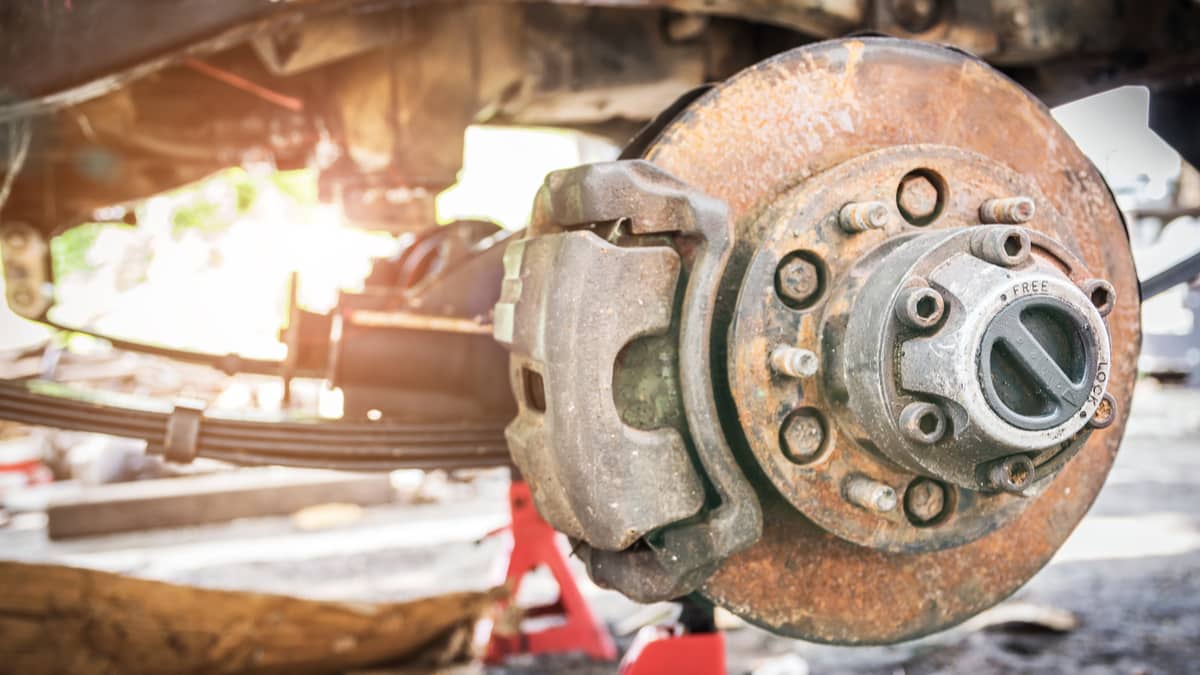



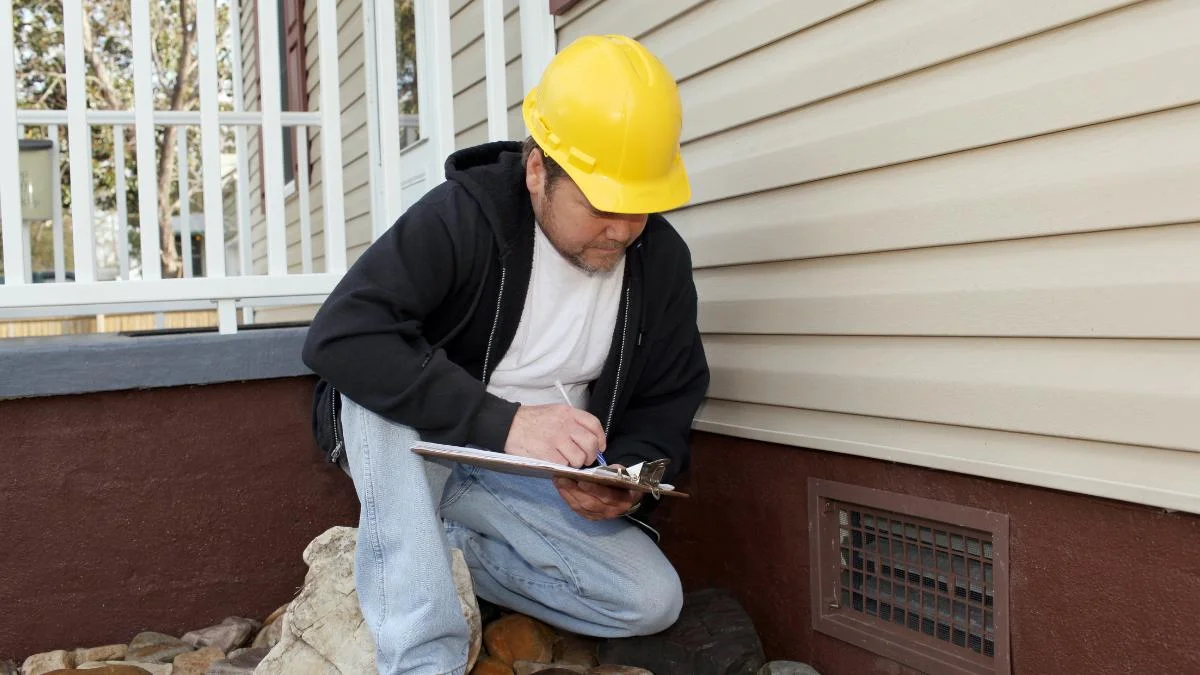
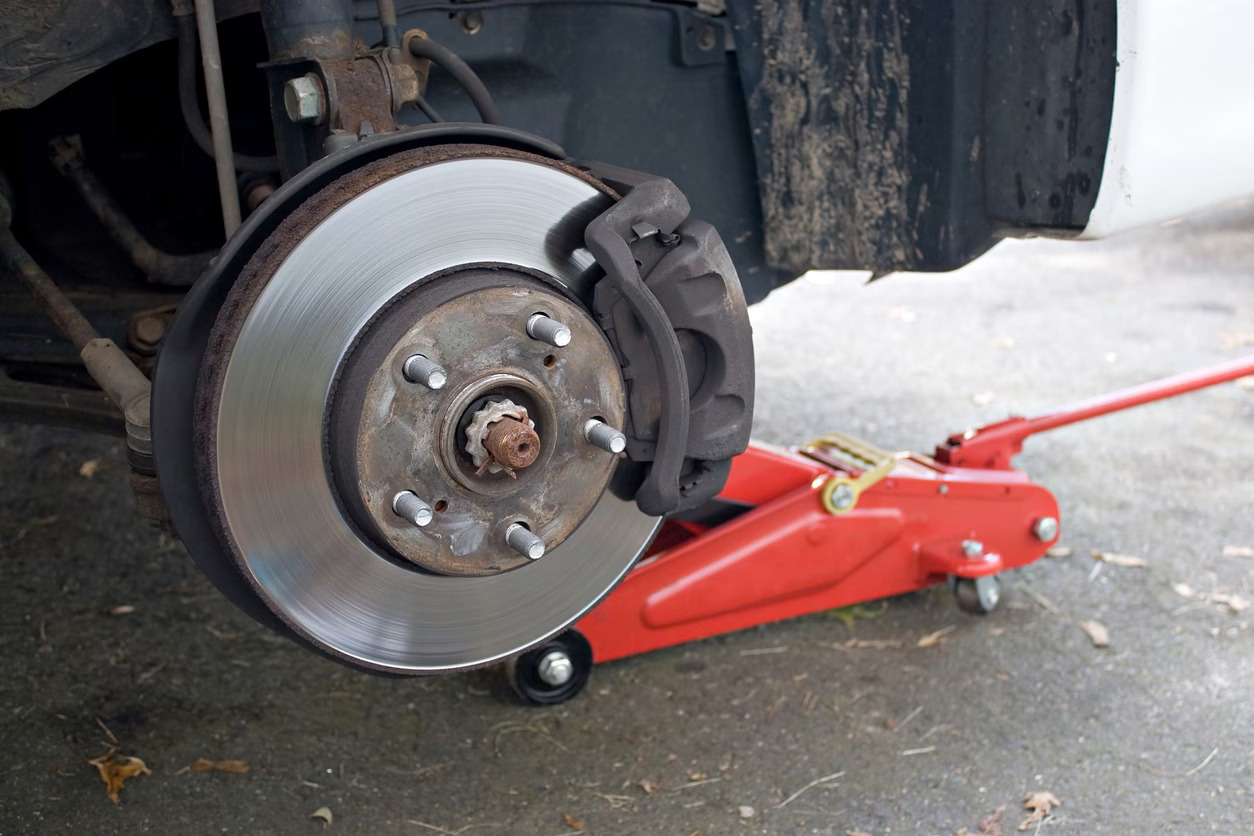



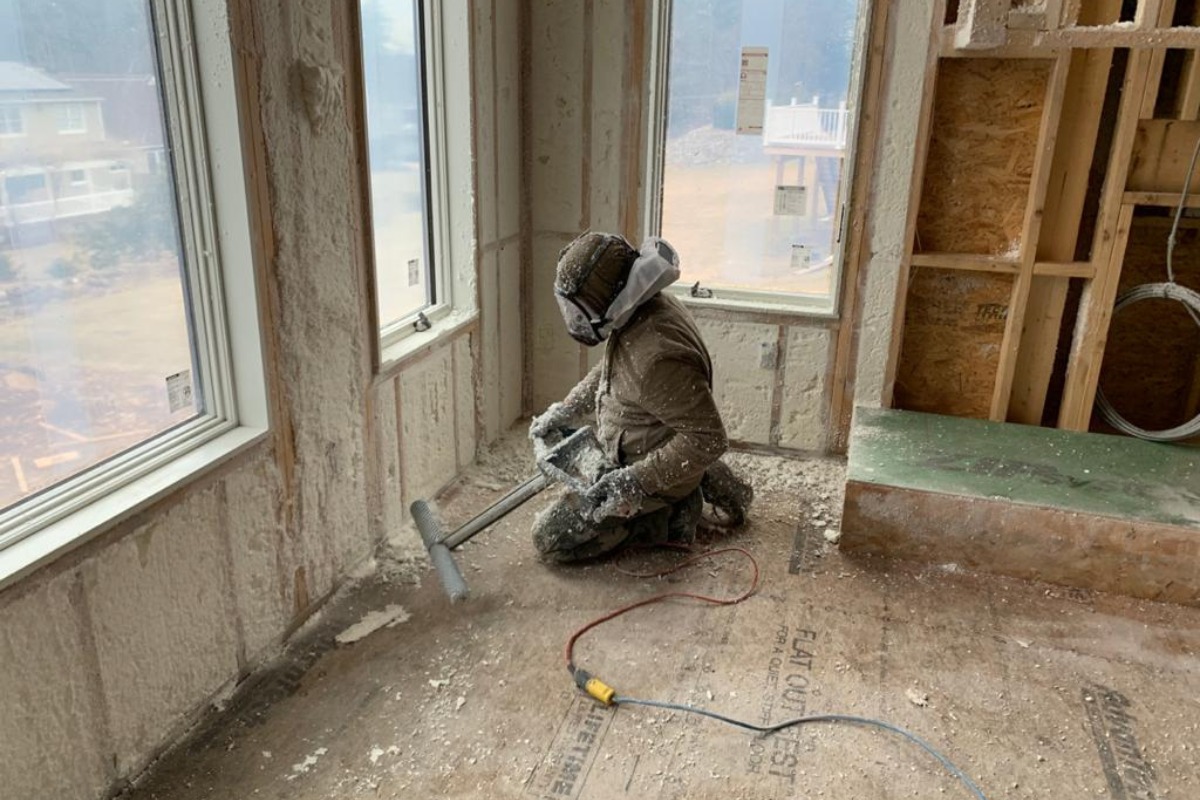

0 thoughts on “When You Refinance: What Is The Procedure To Get Cashback For Home Repairs”